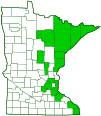dusky slug
(Arion subfuscus/fuscus)
Conservation • Description • Habitat • Biology • Distribution • Taxonomy
|
|
||||||||||||||
Description |
Dusky slug is a common, exotic, terrestrial, roundback slug. It is native to northern Europe and was introduced into North America. It was first reported in the United States in the vicinity of Boston in 1842, and by 1940 it was widespread across North America. Molecular DNA evidence suggests that it probably came from Britain, France, or the Netherlands. It was likely introduced several times. It is found in moist or wet areas in deciduous and coniferous woodlands, in meadows on rocks, and in old fields and waste places. It is often encountered in areas of human activity, including in roadsides, gardens, campgrounds, wood piles, and window wells. In natural areas it is sometimes more abundant than native snail and slug species. It can a pest of agricultural crops, forest replantings, and gardens. Two species of dusky slug are often treated as a single species complex, a group of species so similar that the boundaries are unclear. Western dusky slug (Arion subfuscus) is native to western Europe, northern dusky slug (Arion fuscus) is native to central, eastern, and northern Europe. Aside from their geographic distribution, the two species can only be distinguished by the size and color of the genitalia of dissected individuals, or by analysis of their alloenzymes. Both species have been introduced into North America. The adult is 2″ to 2¾″ (5 to 7 cm) long. There is no shell. The body is long and slender when extended, short and bell-shaped in cross section when contracted. It is not keeled, and it does not have an elevated hump. The back plate (mantle) is about one third the total length of the body. It is covered with rows of pale bumps (tubercles), giving it a finely granular appearance. It is variable in color, but populations generally fit into one of four color groups: blackish-brown, yellowish-brown, orange, and reddish-brown. The orange or yellowish-orange color is mostly – or completely – due to a covering of mucus. When handled, the mucus will stain the handler’s fingers. There is usually an indistinct brown stripe and a lighter region above the stripe on each side extending the entire length of the body, but this is sometimes absent. The area near the foot fringe is whitish. The underside (sole) is pale yellow. It is not divided buy two longitudinal furrows. The head and tentacles are black. |
Size |
2″ to 2¾″ (5 to 7 cm) long |
Similar Species |
Habitat |
Deciduous and coniferous woodlands, meadows, old fields, waste places, roadsides, gardens, campgrounds, wood piles, and window wells. |
Biology |
Season |
Summer and fall |
Behavior |
|
Life Cycle |
|
Food |
Mushrooms, living and dead plant matter, fruit, and animal excrement. |
Distribution |
||
|
Sources |
|
| 8/19/2024 | ||
Occurrence |
||
Common |
||
Taxonomy |
|
Class |
Gastropoda (gastropods) |
Subclass |
Heterobranchia |
Infraclass |
Euthyneura |
Subterclass |
Tectipleura |
Superorder |
Eupulmonata |
Order |
Stylommatophora (common land snails and slugs) |
Suborder |
Helicina |
Infraorder |
Arionoidei |
Superfamily |
Arionoidea (roundback slugs and allies) |
Family |
Arionidae (roundback slugs) |
Genus |
Arion (arion slugs) |
Subgenus |
Mesarion (dusky slugs) |
Subordinate Taxa |
|
northern dusky slug (Arion fuscus) western dusky slug (Arion subfuscus) |
|
Synonyms |
|
Limax fuscus |
|
Common Names |
|
dusky arion dusky slug |
|
Glossary
Mantle
On gastropods: the fleshy, membranous covering of the front of the body.
Visitor Photos |
||
Share your photo of this gastropod. |
||
This button not working for you? |
||
Alfredo Colon |
||
 |
||
 |
 |
|
 |
 |
|
 |
 |
|
 |
 |
|
 |
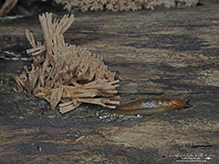 |
|
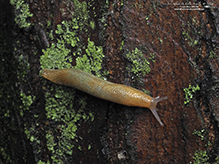 |
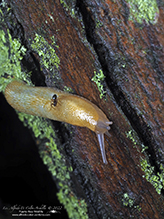 |
|
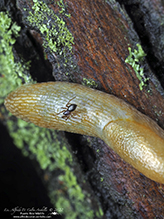 |
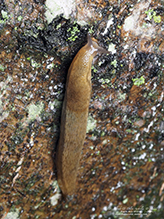 |
|
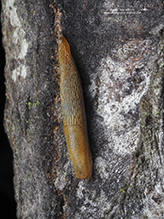 |
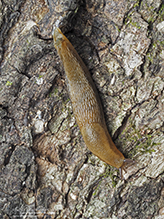 |
|
Greg Watson |
||
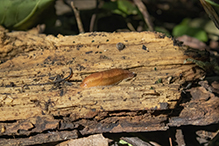 |
|
|
MinnesotaSeasons.com Photos |
||
|
||
|

Slideshows |
Dusky Slug (Arion subfuscus) |

|
Arion subfuscus |

|
About
Arion subfuscus |

Visitor Videos |
||
Share your video of this gastropod. |
||
This button not working for you? |
||
|
Other Videos |
||
Arion subfuscus (Draparnaud, 1805) Dusky Arion Slug |
About
May 15, 2014 From garden in residential area, Eugene, Lane County, Oregon, May, 2014. See: https://jacksonvilleshells.org/416tts.htm |

Visitor Sightings |
||
Report a sighting of this gastropod. |
||
This button not working for you? |
||
Alfredo Colon |
Location: Albany, NY |
 |
Alfredo Colon |
Location: Albany, NY |
 |
Alfredo Colon |
Location: Albany, NY |
 |
Alfredo Colon |
Location: Albany, NY |
 |
| Greg Watson 9/3/2022 |
Location: Eagles Bluff Park |
 |
| Alfredo Colon 8/27/2022 |
Location: Albany, NY |
 |
| Alfredo Colon 8/24/2022 |
Location: Albany, NY |
 |
| Alfredo Colon 8/18/2022 |
Location: Albany, NY |
 |
| Alfredo Colon 8/8/2022 |
Location: Albany, NY |
 |
| Alfredo Colon 8/5/2022 |
Location: Albany, NY |
 |
MinnesotaSeasons.com Sightings |
||
|

Created: 11/19/2022 Last Updated: © MinnesotaSeasons.com. All rights reserved. |
